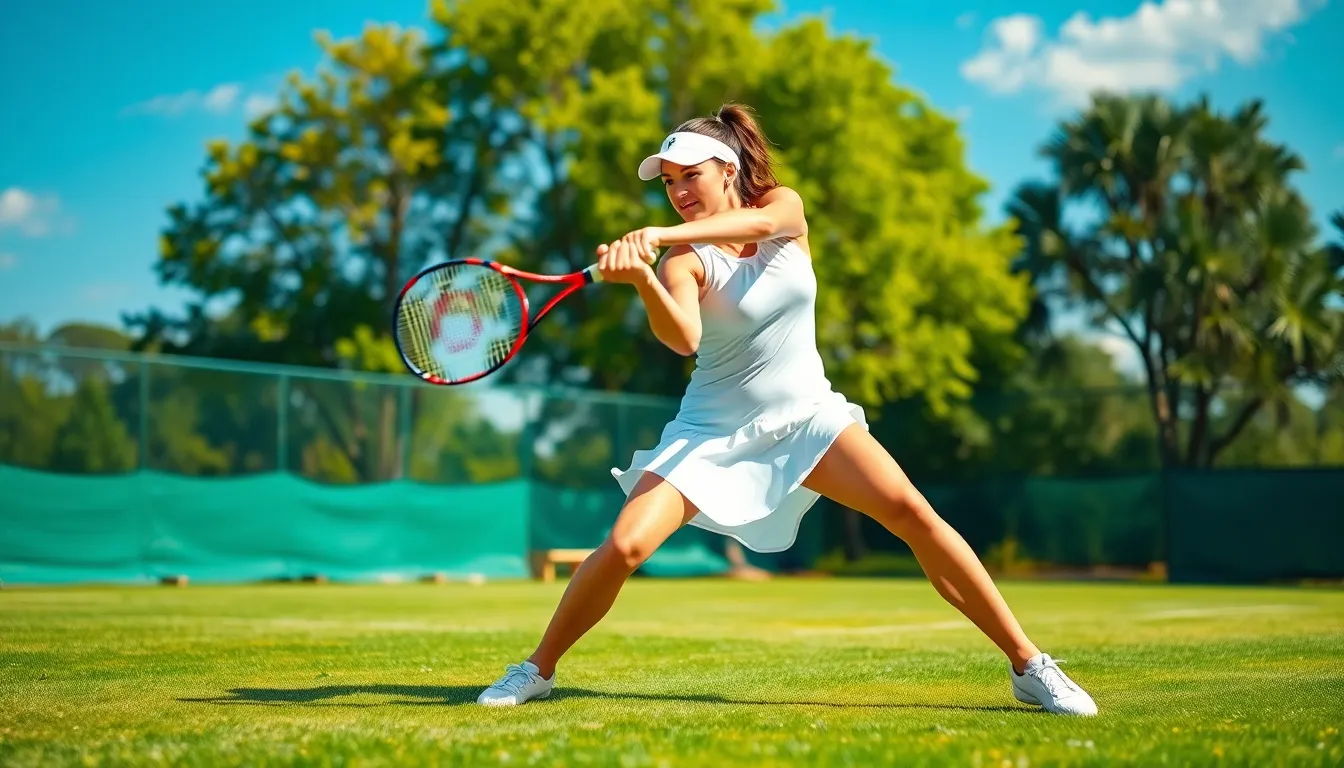Tennis season spans virtually the entire calendar year, but when’s the best time to watch or play this beloved sport? While professional tennis tournaments run from January through November, the intensity peaks during exact months when Grand Slam events capture global attention.
You’ll find that tennis schedules vary depending on whether you’re focusing on professional tours or recreational play. The ATP and WTA tours feature different surfaces throughout the year—hard courts dominating the early and late season, clay courts in spring, and grass courts briefly taking center stage in early summer. For recreational players in the northern hemisphere, the prime tennis season typically runs from late spring through early fall when weather conditions are most favorable.
Tennis Season Overview
The professional tennis season spans 11 months, running from January through November with a brief off-season in December. This extended calendar gives tennis fans nearly year-round action to enjoy across various tournaments and surfaces.
Professional tennis follows a structured yearly pattern organized around four Grand Slam tournaments—the Australian Open (January), French Open (May-June), Wimbledon (June-July), and US Open (August-September). These prestigious events form the backbone of the tennis calendar and offer the highest prize money and ranking points.
Between these major tournaments, players compete in ATP (Association of Tennis Professionals) and WTA (Women’s Tennis Association) events of varying importance. The season begins with hard court tournaments in Australia and Asia, transitions to the European clay court swing in spring, moves to grass courts in early summer, returns to hard courts in North America, and concludes with indoor tournaments in Europe and Asia.
“I’ve noticed recreational players often get confused about when to focus their training for exact surfaces,” says Azura Victoria, founder of tennisservetypes.com. “During my coaching sessions, I emphasize how understanding the pro calendar can help amateurs structure their own practice schedule, especially if they’re working on adapting their game to different court types.”
The tennis calendar also includes team competitions like the Davis Cup, Billie Jean King Cup, and the ATP Cup, adding another dimension to the competitive industry. These events foster national pride and team spirit in what’s primarily an individual sport.
For recreational players, local seasons typically align with favorable weather conditions in your region. In the northern hemisphere, outdoor tennis thrives from April through October, while southern hemisphere players enjoy optimal conditions from October through April.
Professional Tennis Tour Calendar
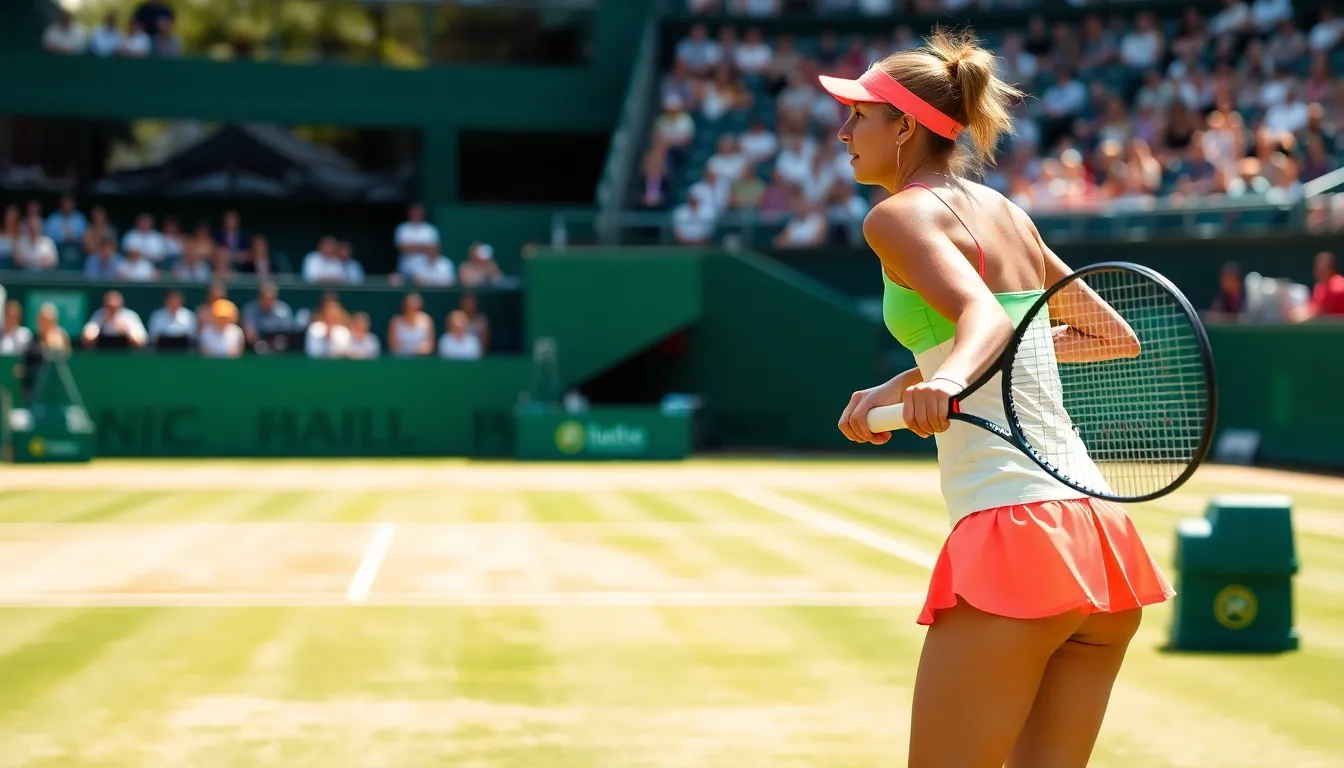
The professional tennis tour spans almost the entire year with tournaments scheduled from January through November. Each tour follows a structured calendar organized around different court surfaces and prestigious events that attract top players worldwide.
ATP Tour Season (Men’s Tennis)
The ATP (Association of Tennis Professionals) Tour kicks off in January with the Australian summer of tennis, culminating in the Australian Open. Men’s tennis features a tiered tournament structure including Grand Slams, ATP Masters 1000 events, ATP 500 series, and ATP 250 tournaments. Following the hard court start, players transition to the European clay court swing in April, featuring key tournaments in Monte Carlo, Madrid, and Rome before the French Open in late May. June brings the brief but intense grass court season highlighted by Wimbledon. Players return to hard courts for the North American summer swing, peaking at the US Open in late August. The season concludes with indoor tournaments across Europe and Asia before the prestigious ATP Finals in November, featuring only the top 8 players based on yearly performance.
WTA Tour Season (Women’s Tennis)
The WTA (Women’s Tennis Association) Tour follows a similar calendar structure to the men’s tour but with distinct tournaments. Women’s tennis begins with hard court events in Australia, including the Australian Open in January. The WTA 1000 and WTA 500 tournaments form the backbone of the women’s calendar alongside the four Grand Slams. The clay court season for women features important stops in Madrid and Rome before the French Open. After a brief grass court swing culminating at Wimbledon in July, the tour transitions back to hard courts for tournaments across North America. The women’s calendar includes the US Open in early September, followed by a important Asian swing featuring tournaments in China and Japan. The season concludes with the WTA Finals in November, showcasing the year’s top 8 performers competing for one of the most prestigious titles outside the Grand Slams.
Grand Slam Tournaments and Their Seasons
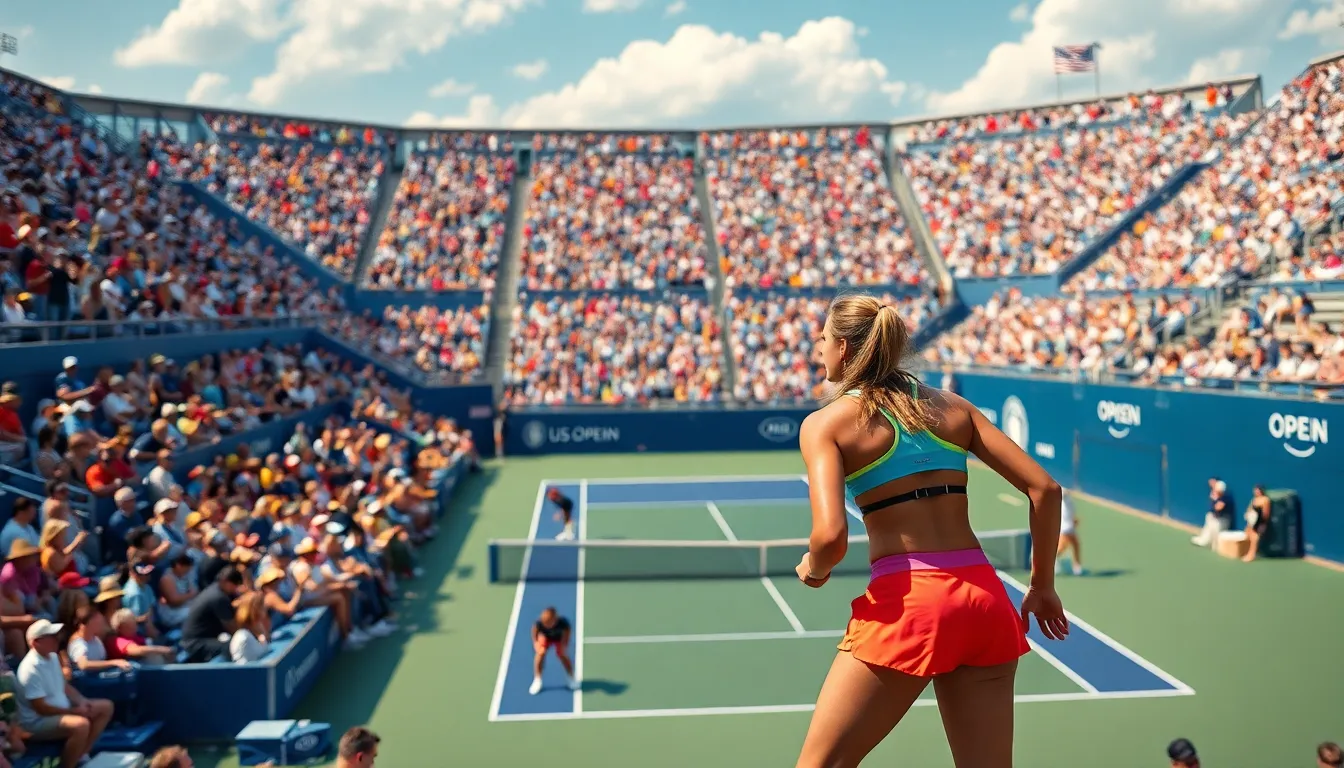
Tennis Grand Slam tournaments form the cornerstone of the professional tennis calendar, with each major event taking place during a exact season. These prestigious tournaments are played on different surfaces and in various weather conditions, testing players’ adaptability and skill throughout the year.
Australian Open (January)
The Australian Open kicks off the Grand Slam season in January during the Southern Hemisphere summer. Played on hard courts at Melbourne Park, this tournament presents unique challenges with temperatures often soaring above 100°F. Players compete in hot and demanding conditions, making physical fitness crucial for success. The tournament’s timing marks the beginning of the professional tennis season, setting the tone for the year ahead.
French Open (May-June)
Roland Garros hosts the French Open on its iconic red clay courts in late May through early June, coinciding with spring in Paris. Clay court tennis demands patience, endurance, and tactical play—qualities that create longer rallies and more physical matches. The slow-bouncing surface favors baseline players who excel in constructive point-building rather than serve-dominated play. Tournament conditions often include occasional rain and variable temperatures, adding another layer of complexity to this challenging major.
Wimbledon (June-July)
Wimbledon takes center stage in late June to mid-July, capturing the essence of early British summer. The All England Lawn Tennis & Croquet Club’s pristine grass courts produce faster, lower bounces that reward aggressive play and strong serving. Traditional white attire requirements and strawberries with cream highlight the tournament’s cherished customs. Grass court tennis represents a stark contrast to the preceding clay season, requiring players to adjust their movement and strategy significantly within just a few weeks.
US Open (August-September)
The US Open concludes the Grand Slam calendar during the transition from summer to fall in New York City. Hard courts at the USTA Billie Jean King National Tennis Center deliver consistent bounces and moderate pace, allowing for varied playing styles to succeed. The tournament’s energy matches New York’s vibrant atmosphere, with night sessions creating electric environments for players and spectators alike. Late-summer heat and humidity frequently test competitors’ stamina as they battle through the final major of the tennis season.
Regional Tennis Seasons
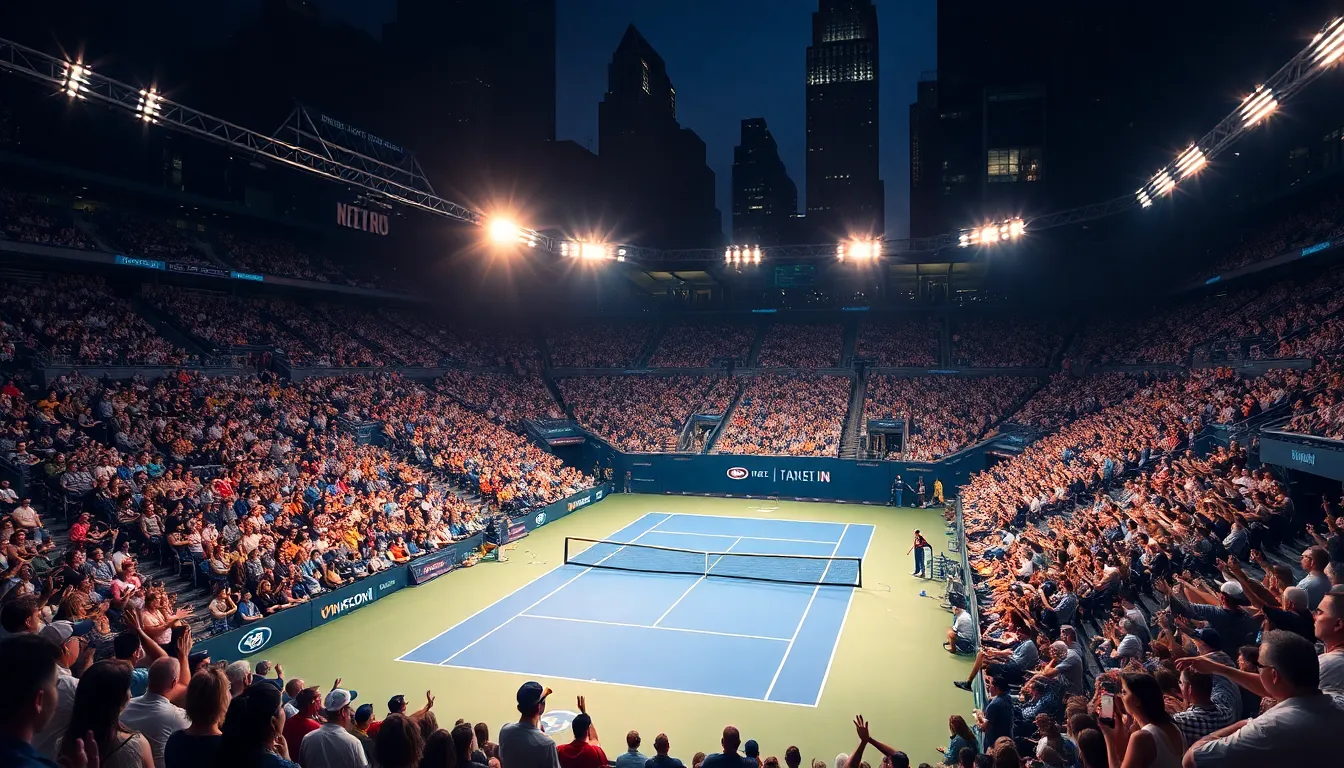
Tennis enjoys a year-round presence globally, with professional tournaments organized into distinct regional seasons. Each region’s tennis calendar features unique characteristics based on climate conditions, court surfaces, and tournament traditions.
North American Tennis Season
The North American tennis season peaks in late summer through early fall, centered around the prestigious US Open. This Grand Slam tournament runs from late August to early September in New York City, featuring high-energy matches on hard courts. Players appreciate the electric atmosphere created by enthusiastic crowds, particularly during evening matches under the lights. The North American swing includes important lead-up tournaments across the United States and Canada, giving players valuable preparation time on similar hard court surfaces before competing at Flushing Meadows.
European Tennis Season
Europe hosts the most diverse portion of the tennis calendar, featuring both the clay and grass court seasons. The clay court season dominates spring, culminating in the French Open at Roland-Garros from mid-May to early June. Players face the unique challenges of sliding on the red clay, captivating in longer rallies that test endurance and tactical patience. Following the clay season, the tennis industry quickly transitions to grass courts, with Wimbledon serving as the crown jewel from late June to mid-July. European tournaments create the backbone of the professional calendar, with players adjusting their game styles significantly as they move between these contrasting surfaces.
Asian Tennis Season
The Asian tennis season typically bridges the gap between the European grass tournaments and North American hard court events. Though lacking a Grand Slam tournament, this region hosts many important ATP and WTA competitions primarily played on hard courts. Asian tournaments attract strong player fields and passionate fans, particularly in metropolitan centers across China, Japan, and other countries. Local Asian players often perform well during this segment of the calendar, benefiting from familiar conditions and home crowd support. The Asian swing provides crucial ranking points for players as they approach the final stretch of the professional season.
Amateur and Recreational Tennis Seasons
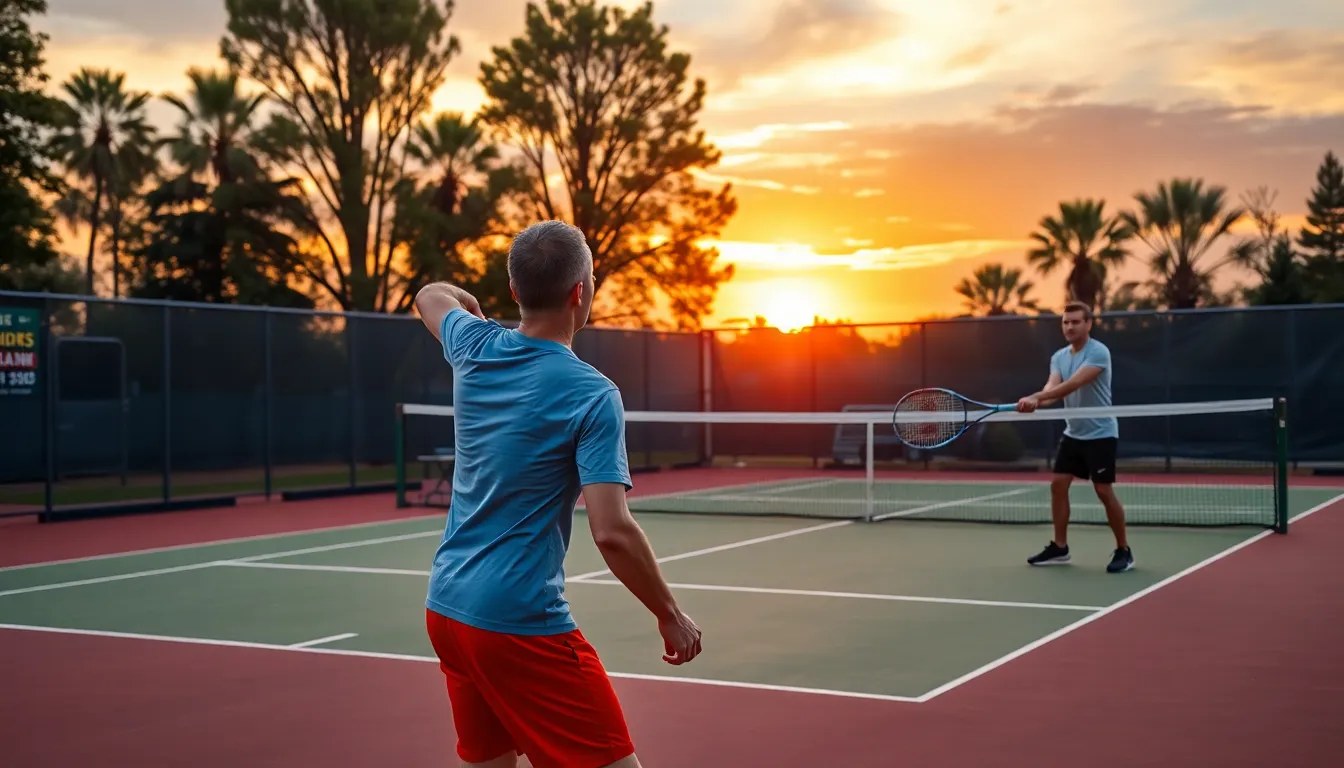
Recreational tennis seasons vary dramatically based on your local climate, available facilities, and personal preferences. Unlike the rigid professional calendar, amateur players enjoy more flexibility in scheduling their tennis activities throughout the year.
In the Northern Hemisphere, outdoor tennis typically thrives from April through October when temperatures remain mild and daylight extends into the evening hours. Many club leagues and local tournaments organize their schedules during these months to take advantage of optimal playing conditions.
“I’ve noticed most of my recreational students experience their most important improvement during the summer months when they can practice consistently outdoors,” shares Azura Victoria, founder of tennisservetypes.com. “The extended daylight hours allow them to hit the courts after work without rushing through their sessions.”
Southern Hemisphere recreational players experience their prime outdoor season during opposite months—October through April—when summer conditions provide ideal tennis weather. Local clubs in Australia, New Zealand, and South Africa often structure their competition calendars around these favorable months.
Indoor tennis facilities create year-round playing opportunities regardless of external weather conditions. Heated indoor courts in colder regions remain busy during winter months when outdoor play becomes impractical due to snow, rain, or freezing temperatures.
Seasonal considerations affect recreational play in several ways:
- Court availability increases during off-peak seasons, making it easier to book preferred time slots
- Weather impacts vary by region, with humidity, wind, and temperature influencing ball flight and player comfort
- League schedules typically align with local climate patterns to ensure consistent play conditions
- Maintenance cycles for public courts often occur during shoulder seasons (early spring/late fall)
Many recreational players adjust their practice focus seasonally, working on exact skills during different times of the year. Training on varied surfaces throughout the seasons helps develop adaptability and well-rounded playing capabilities similar to touring professionals.
Community tennis programs frequently offer seasonal clinics and camps that coincide with school breaks and holidays. These structured programs provide excellent opportunities for players of all ages to improve their skills during concentrated time periods.
Court surface availability often dictates seasonal play patterns for recreational players. Clay courts typically open later in spring after frost dangers pass and close earlier in fall due to maintenance requirements, while hard courts remain accessible for extended seasons in many regions.
Tennis engagement doesn’t necessarily end during off-seasons—many passionate players use winter months for fitness training, stroke analysis, and mental preparation to prepare for the upcoming outdoor season.
Indoor vs. Outdoor Tennis Seasons
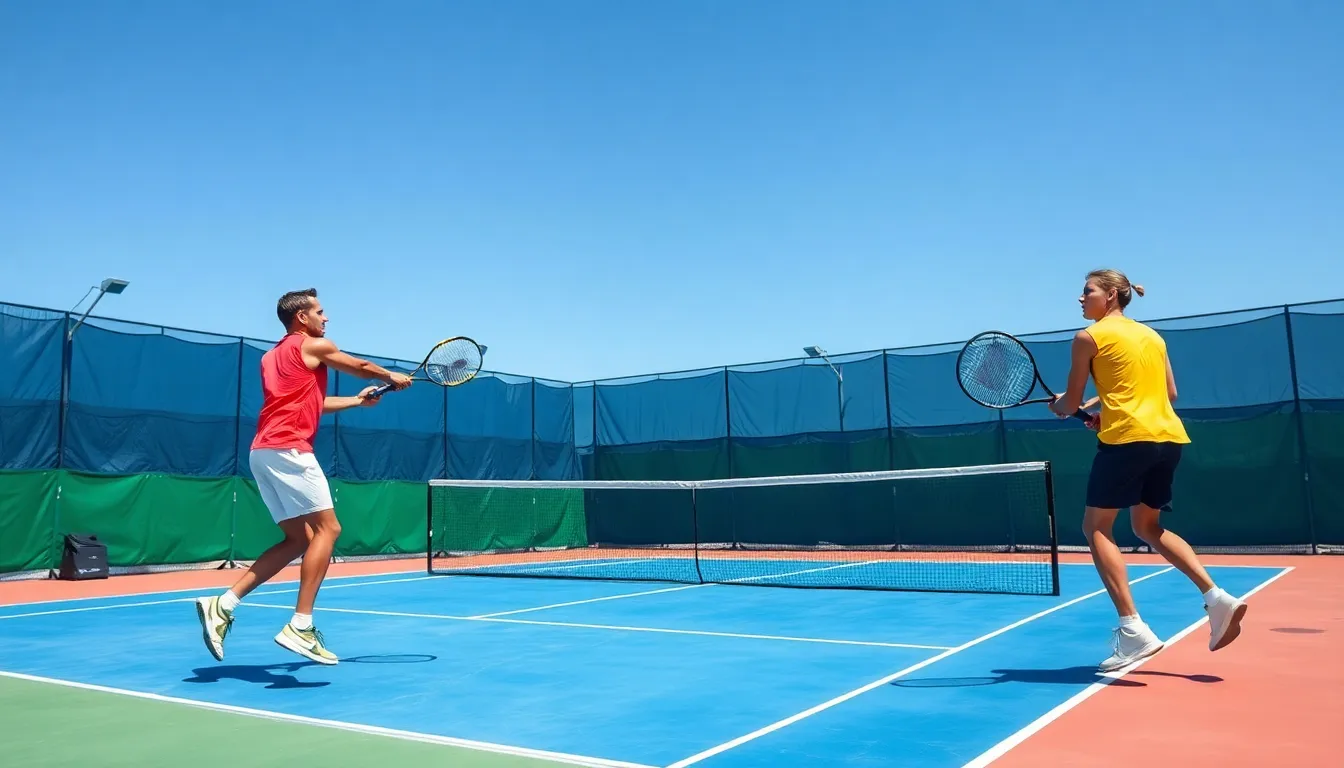
Tennis uniquely spans both indoor and outdoor environments, adapting to seasonal changes throughout the year. Professional tours strategically schedule tournaments to maximize ideal playing conditions across different global regions.
Outdoor Tennis Schedule
Outdoor tennis dominates the professional calendar with three distinct surface-based seasons:
- Hard Court Season: Running in January (Australian Open) and August-September (US Open), these medium-paced courts create balanced matches for all-round players. The courts in Melbourne often reach scorching temperatures, requiring exceptional physical conditioning.
- Clay Court Season: Spanning spring months (March-June), culminating in the French Open at Roland Garros. These distinctive red courts slow ball speed and create high bounces, rewarding patient baseline play and strategic point construction.
- Grass Court Season: Occurring briefly in June-July, highlighted by Wimbledon’s prestigious championships. These fast-paced courts produce lower bounces and favor aggressive serve-and-volley tactics, creating a dramatic shift from the preceding clay season.
During my coaching sessions at local clubs, I’ve noticed recreational players often struggle most with the transition between these surfaces. Understanding the professional calendar helps them better prepare for seasonal court changes.
Indoor Tennis Schedule
Indoor tennis typically takes center stage from November through December, featuring controlled environments that eliminate weather variables. The ATP Finals in Turin exemplifies the pinnacle of indoor competition, showcasing the year’s top performers on fast hard courts.
The indoor season offers several advantages:
- Climate-controlled conditions eliminate wind, sun, and precipitation factors
- Consistent lighting creates optimal visibility
- Faster playing surfaces reward aggressive techniques
- Tournaments can proceed regardless of outdoor weather conditions
| Season Type | Surface | Typical Months | Major Events | Playing Characteristics |
|---|---|---|---|---|
| Outdoor Hard | Hard | Jan, Aug-Sept | Australian Open, US Open | Medium pace, balanced play |
| Outdoor Clay | Clay | Mar-June | French Open | Slow pace, high bounces |
| Outdoor Grass | Grass | June-July | Wimbledon | Fast pace, low bounces |
| Indoor | Hard | Nov-Dec | ATP Finals | Fast pace, controlled environment |
Many recreational players in northern regions transition to indoor facilities during winter months. Local indoor leagues typically form during this period, creating year-round competitive opportunities regardless of climate challenges.
The professional tennis calendar’s unique structure of indoor and outdoor seasons ensures the sport continues globally throughout the year, offering different challenges and opportunities for players at all levels to test their adaptability across varying conditions.
Weather Considerations for Tennis Play
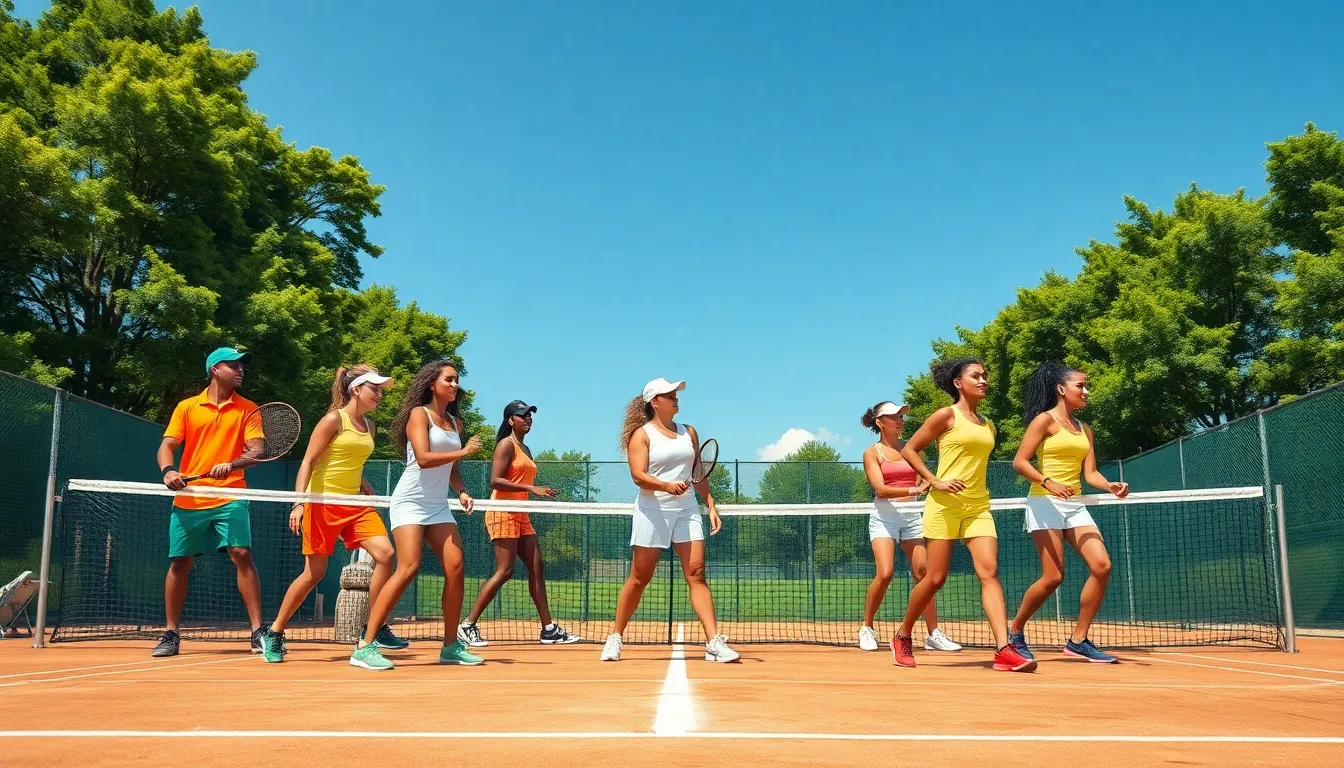
Tennis requires adaptability to various weather conditions throughout the year. Ideal tennis weather features dry conditions, moderate temperatures, and minimal wind – typically found in spring or early summer in most regions.
Playing in Hot Conditions
Heat significantly impacts tennis performance and playing experience. High temperatures cause dehydration, increased fatigue, and alter ball behavior, making it bounce higher and faster. During my coaching sessions in Florida summers, I’ve seen even experienced players struggle when temperatures climb above 90°F.
To manage hot weather tennis:
- Schedule matches during cooler morning or evening hours
- Wear lightweight, breathable clothing with moisture-wicking properties
- Hydrate thoroughly before, during, and after play
- Shorten points when possible to reduce physical exertion
- Adjust your playing style to conserve energy
“I once coached a tournament in mid-July where players were taking ice baths between sets,” shares Azura Victoria. “The heat changed everything about how they approached their matches – from serve speed to point construction.”
Cold Weather Adaptations
Cold temperatures create different challenges for tennis players. Lower temperatures:
- Stiffen muscles and reduce flexibility
- Decrease ball speed and overall liveliness
- Require longer, more thorough warm-ups
- Necessitate appropriate layered clothing
Tennis balls also respond differently in cold weather, becoming less bouncy and requiring more power from players to achieve depth. Many recreational players underestimate how dramatically cold affects their game until experiencing it firsthand.
Wind and Its Impact
Wind creates unpredictable playing conditions that test even professional players. Strong gusts alter ball trajectory, making consistent shot-making extremely difficult. Players must:
- Reduce swing speed and shot power
- Aim for larger target areas on the court
- Adjust toss height on serves
- Prepare for unusual ball bounces
“When coaching in windy conditions, I emphasize patience above all else,” notes Azura. “The player who adapts better to wind usually wins, regardless of skill level.”
Rain and Humidity Effects
Wet conditions transform tennis surfaces, particularly clay courts, which become significantly slower. Players with flat shots typically gain an advantage in these conditions compared to heavy topspin hitters. Humidity also influences play by affecting:
- Air density and ball flight
- Grip moisture and racquet control
- Player comfort and endurance
Professional tours strategically schedule tournaments to avoid rainy seasons in different regions, but recreational players often face these challenges regularly. Indoor facilities provide relief from weather variables but aren’t accessible to everyone.
Conclusion
Tennis truly stands as a year-round sport with something to offer in every season. Whether you’re tracking the professional circuit from January’s Australian Open through November’s Finals or planning your recreational play around local weather patterns you now have the knowledge to maximize your tennis experience.
The sport’s diverse calendar offers opportunities to enjoy different playing surfaces and adapt to varying conditions throughout the year. From scorching summer matches to climate-controlled indoor facilities during winter months tennis remains accessible regardless of season.
By understanding the rhythms of the tennis calendar you’ll be better equipped to plan your viewing schedule follow your favorite players or organize your own playing time for optimal enjoyment and performance on the courts.
Frequently Asked Questions
When is the professional tennis season?
The professional tennis season runs from January to November, encompassing tournaments worldwide on various surfaces. It begins with the Australian Open in January and concludes with the ATP and WTA Finals in November. Throughout the year, players compete on hard courts, clay courts, and grass courts, with Grand Slam events marking the season’s highlights.
What are the four Grand Slam tournaments?
The four Grand Slam tournaments are the Australian Open (January, hard courts), the French Open (May-June, clay courts), Wimbledon (June-July, grass courts), and the US Open (August-September, hard courts). These prestigious events offer the highest ranking points, prize money, and attract the most media attention in professional tennis.
When is the best time to play tennis outdoors in the Northern Hemisphere?
The ideal outdoor tennis season in the Northern Hemisphere runs from late April to early October when weather conditions are most favorable. Summer months (June-August) offer extended daylight hours and warm temperatures, perfect for evening play. Spring and fall provide comfortable temperatures, though court availability may vary based on local weather patterns.
How do different court surfaces affect the tennis season?
Different court surfaces create distinct playing seasons throughout the year. Hard courts dominate early and late season (January-March and August-November). Clay court season runs primarily from April to June in Europe. The brief grass court season spans just a few weeks in June-July. Each surface requires different playing techniques and physical adaptations.
When does the clay court season occur?
The clay court season primarily runs from April to June, centered in Europe. It begins with smaller tournaments in April, builds to Masters events in Madrid and Rome in May, and culminates with the French Open in late May to early June. Clay courts slow the ball and produce higher bounces, favoring players with strong defensive skills and physical endurance.
How does weather impact tennis play?
Weather significantly impacts tennis play across seasons. Heat can affect player endurance and equipment performance. Cold weather reduces ball bounce and requires proper warm-up to prevent injuries. Wind alters ball trajectory and requires tactical adjustments. Rain interrupts outdoor play and affects court conditions, particularly on clay surfaces. Indoor seasons eliminate these variables.
Can tennis be played year-round?
Yes, tennis can be played year-round with the right facilities. Indoor courts allow play regardless of weather conditions or season. Many clubs offer climate-controlled environments with consistent lighting and court conditions. In regions with mild climates, outdoor play may be possible throughout the year, though seasonal adjustments to playing times may be necessary.
When is the indoor tennis season?
The professional indoor tennis season primarily runs from October to November, featuring tournaments in Europe and Asia. For recreational players, indoor tennis typically increases during winter months (November-March in Northern Hemisphere and May-September in Southern Hemisphere) when outdoor play becomes challenging due to weather conditions.
How do tennis seasons differ between professional and recreational players?
Professional players follow a structured global calendar dictated by tournaments, traveling worldwide to compete on various surfaces year-round. Recreational players typically align their seasons with local weather conditions, focusing on outdoor play during favorable months and utilizing indoor facilities during off-seasons. Local league schedules and court availability also influence recreational seasons.
What is the best time to watch professional tennis on TV?
The most exciting time to watch professional tennis is during Grand Slam tournaments: Australian Open (January), French Open (May-June), Wimbledon (June-July), and US Open (August-September). Additionally, Masters 1000 events scattered throughout the year feature top players. Year-end championships in November showcase the season’s best performers competing in round-robin formats.


